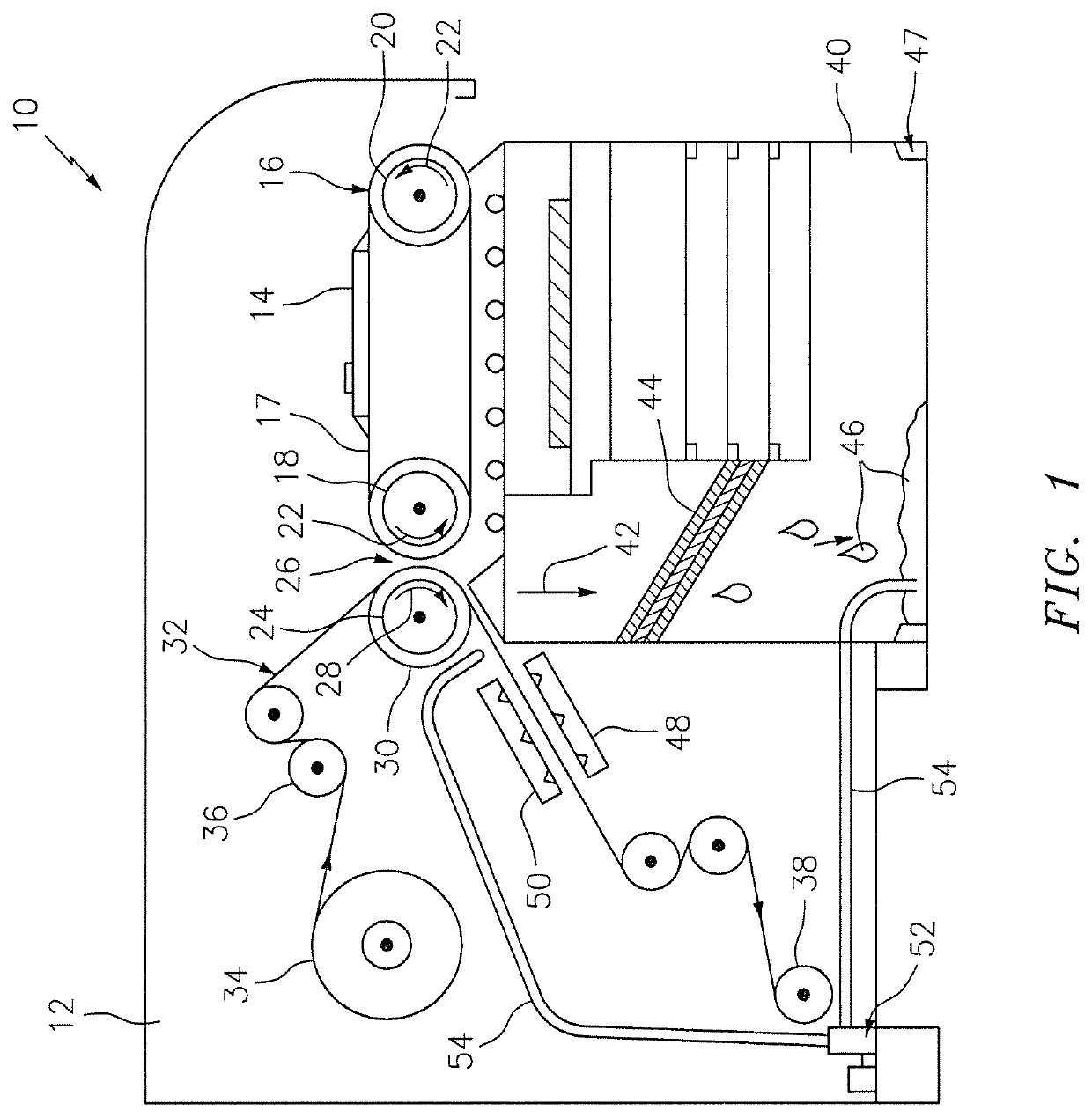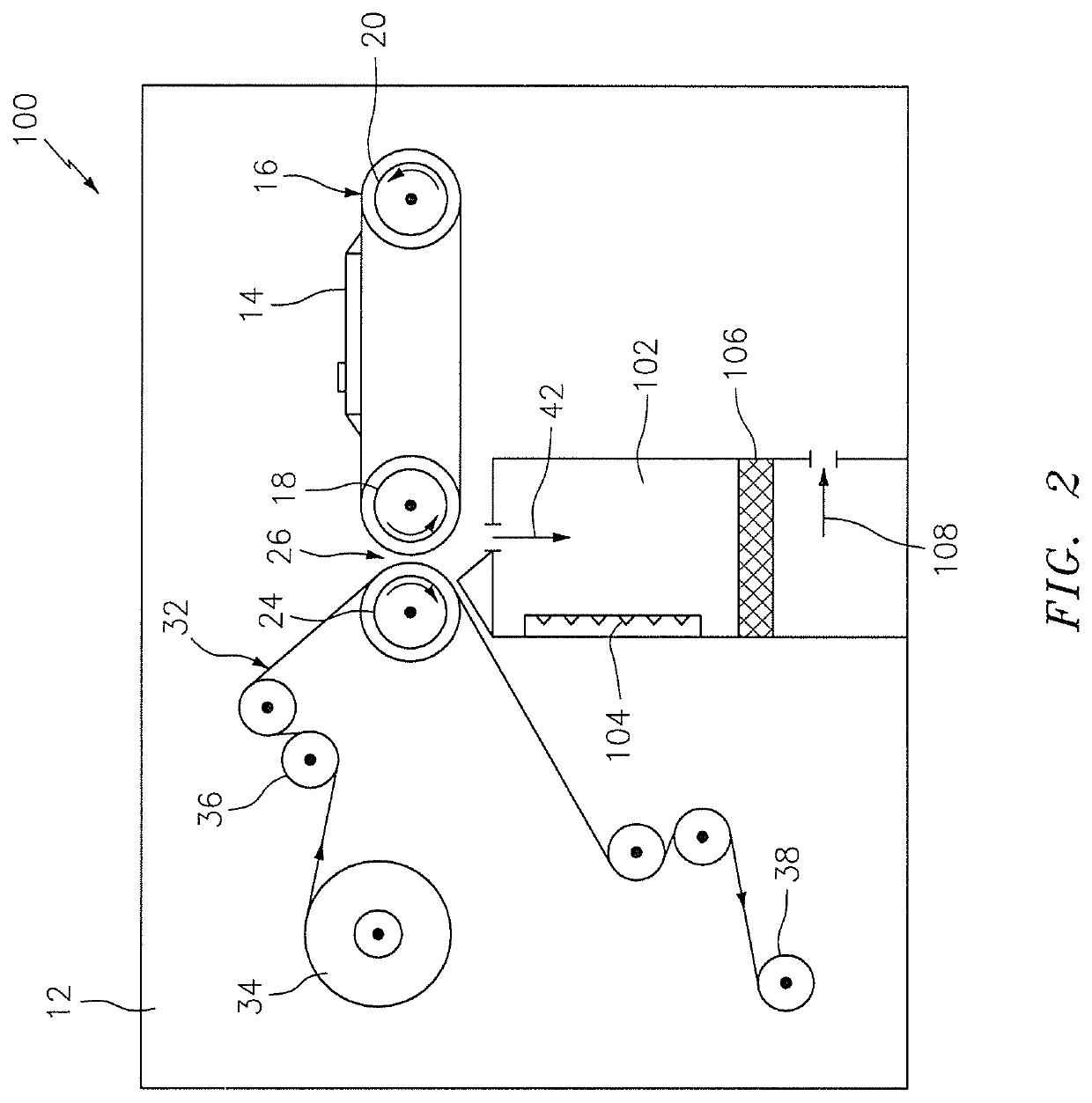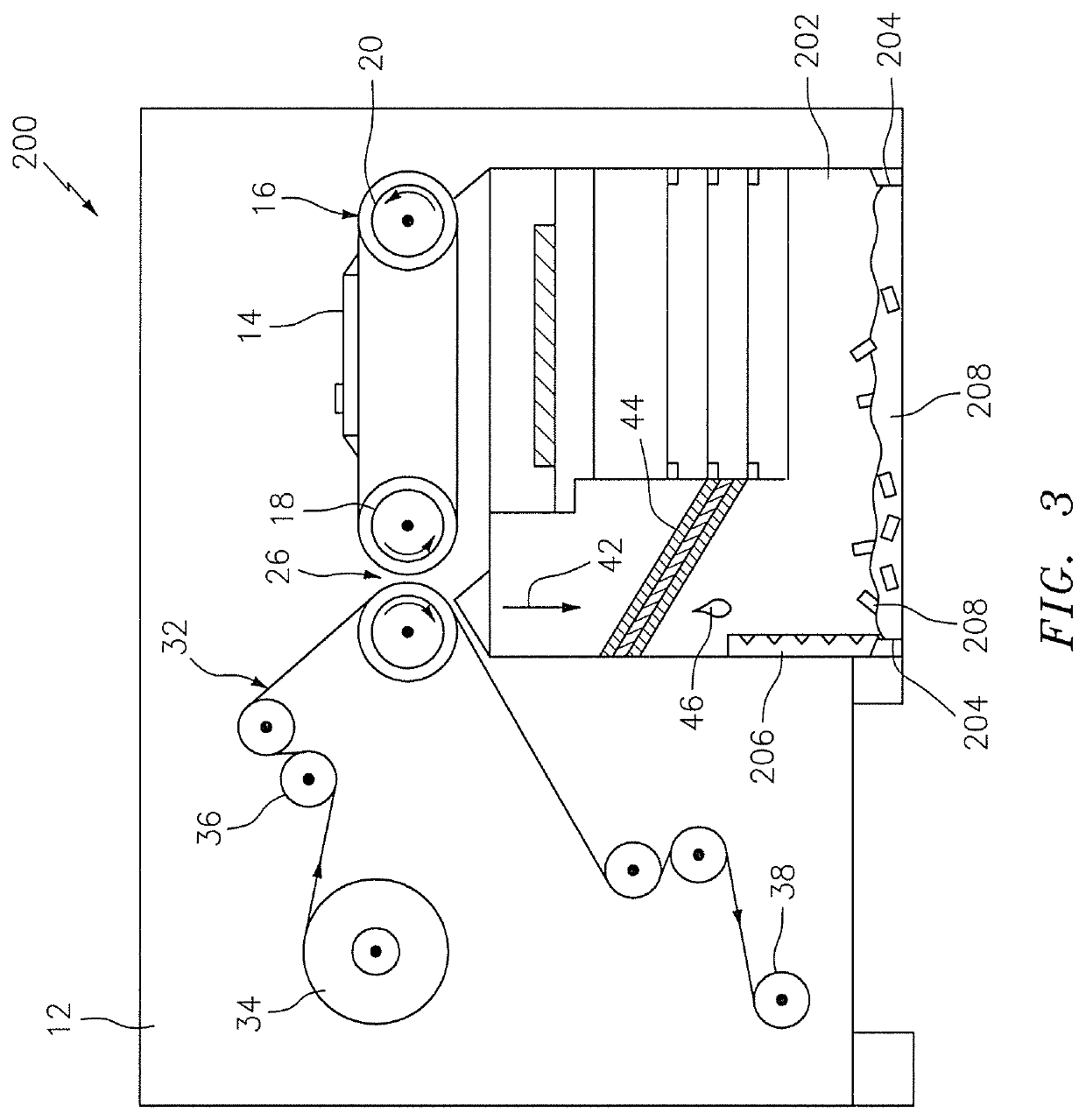System for thermal development of flexographic printing plates
a technology of thermal development and flexographic printing, which is applied in the field of system and method for forming reliefs, can solve the problems of user exposure to irritants of photopolymer material during filter removal, environment and user, and achieve the effect of eliminating the potential for user or environmental contact and easy and safe disposal
- Summary
- Abstract
- Description
- Claims
- Application Information
AI Technical Summary
Benefits of technology
Problems solved by technology
Method used
Image
Examples
example 1
[0083]A liquid condensate produced in a thermal developing assembly was applied to two side-by-side locations on a surface of an absorbent material of a LAVA® 4260 platemaking machine (produced by MacDermid Graphics Solutions, Atlanta, Ga.). Each location of the absorbent material contained a representative amount of liquid condensate that is consistent with the quantity of liquid condensate generated on each pass of the LAVA® machine.
[0084]The first location on the absorbent material with the liquid condensate was exposed to UV light of 365 nm wavelength with a maximum intensity of approximately 14.3 to 14.55 mW / cm2 (measured 10 mm from the front window of the light source).
[0085]The second location on the absorbent material with the liquid condensate was left untouched and not exposed to UV light. The absorbent material was traveling at 3 ft / min.
[0086]The UV light source had a total lamp power of 20 watts, resulting in 8 watts at 365 nm UV after conversion losses.
[0087]As illustra...
PUM
| Property | Measurement | Unit |
|---|---|---|
| wavelength range | aaaaa | aaaaa |
| temperature | aaaaa | aaaaa |
| temperature | aaaaa | aaaaa |
Abstract
Description
Claims
Application Information
 Login to View More
Login to View More - R&D
- Intellectual Property
- Life Sciences
- Materials
- Tech Scout
- Unparalleled Data Quality
- Higher Quality Content
- 60% Fewer Hallucinations
Browse by: Latest US Patents, China's latest patents, Technical Efficacy Thesaurus, Application Domain, Technology Topic, Popular Technical Reports.
© 2025 PatSnap. All rights reserved.Legal|Privacy policy|Modern Slavery Act Transparency Statement|Sitemap|About US| Contact US: help@patsnap.com



